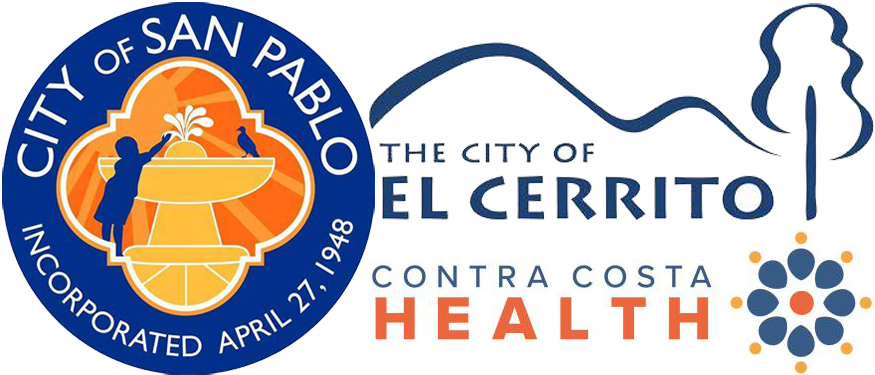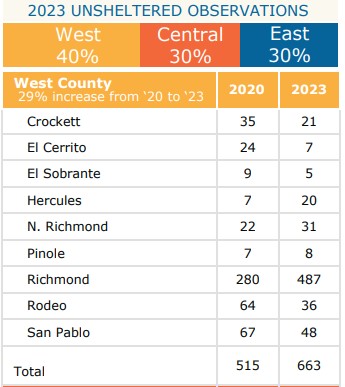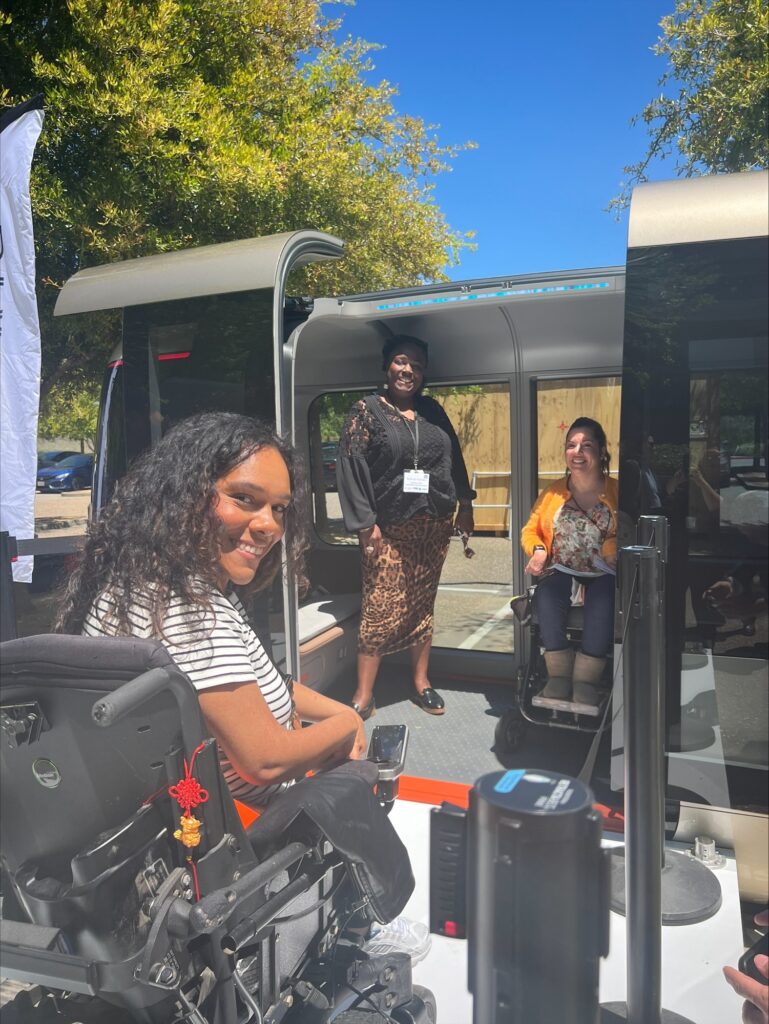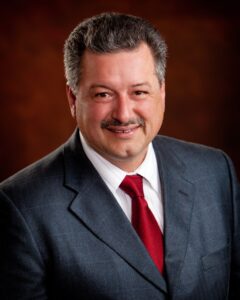
Graphic source: electricityrates.com
“Flat Rate” decision accelerates California’s clean energy transition
May 09, 2024 – SAN FRANCISCO – The California Public Utilities Commission (CPUC) today approved a proposal to reduce the price of residential electricity through a new billing structure mandated by the state Legislature in Assembly Bill 205. This billing adjustment introduces a flat rate bill component and reduces the electricity usage rate. It lowers overall electricity bills on average for lower-income households and those living in regions most impacted by extreme weather events, while accelerating California’s clean energy transition by making electrification more affordable for all.
That’s in spite of the concerns of ratepayers and state legislators who, earlier this year, scrambled to repeal or modify the bill to avoid rates being based on income. The CPUC later scrapped the income-based utility bill scheme proposed by California’s largest utilities including PG&E. (See related articles here and here)
According to the approved proposal, “Today, California’s investor-owned electric utilities recover nearly all costs of providing electricity service through the volumetric (cost per unit) portion of each residential customer’s bill. However, a large portion of these costs are fixed costs that do not directly vary based on the electricity usage of the customer from whom the revenue is being collected, such as the costs of installing final line transformers that make it possible for customers to access the grid. Most utilities nationwide and many publicly-owned utilities in California assess fixed charges on customer bills to recover these fixed costs, consistent with the general ratemaking principle that rates should be based on cost causation
“As directed by Assembly Bill 205, this decision authorizes all investor[1]owned utilities to change the structure of residential customer bills by shifting the recovery of a portion of fixed costs from volumetric rates to a separate, fixed amount on bills without changing the total costs that utilities may recover from customers. As a result, this decision reduces the volumetric price of electricity (in cents per kilowatt hour) for all residential customers of investor-owned utilities.
The new billing structure more evenly allocates fixed costs among customers and will encourage customers to adopt electric vehicles and replace gas appliances with electric appliances because it will be less expensive to charge electric vehicles and operate electric appliances.
“This decision adopts a gradual, incremental approach to implementing Assembly Bill 205 requirements, including the requirement to offer income-graduated fixed charge amounts. The adopted billing structure will offer discounts based on the existing income-verification processes of the utilities’ California Alternate Rates for Energy and Family Electric Rate Assistance programs. The Commission will consider improvements to the new billing structure based on the initial results of implementation and a working group proposal in the next phase of this proceeding.
“Parties to this proceeding concurrently proposed how to implement the requirements of Assembly Bill 205. This decision adopts elements of several party proposals rather than adopting one party’s proposal.”
Read More: Fact Sheet on “Flat Rate” Decision
“This new billing structure puts us further on the path toward a decarbonized future, while enhancing affordability for low-income customers and those most impacted from climate change-driven heat events,” said CPUC President Alice Reynolds. “This billing adjustment makes it cheaper across the board for customers to charge an electric vehicle or run an electric heat pump, which will spur greater uptake of these technologies that are essential to transitioning us away from fossil fuels.”
Under the new billing structure:
- The usage rate for electricity will be reduced by 5 to 7 cents per kilowatt-hour for all residential customers.
- This change makes it more affordable for everyone to electrify homes and vehicles, regardless of income or location, because the price of charging an electric vehicle or running a heat pump is cheaper.
- A portion of the fixed infrastructure costs—such as maintaining power lines and equipment— will be moved from the usage rate to a separate line item called the “Flat Rate” on customer bills.
- The flat rate will be $24.15 per month, with low-income customers and customers living in deed-restricted affordable housing eligible for discounted flat rates of $6 or $12.
Customers enrolled in the California Alternate Rates for Energy (CARE) low-income assistance program will benefit from a discounted flat rate of $6 per month. Customers enrolled in the Family Electric Rate Assistance Program (FERA), as well as those residing in deed-restricted affordable housing with incomes at or below 80 percent of the area median income, will qualify for a discounted flat rate of $12 per month.
The new billing structure does not introduce any additional fees or generate extra profits for utilities. Instead, it redistributes existing costs among customers. This approach aligns with billing practices employed across the nation and by most other utilities in California.
In the coming months, the CPUC will collaborate with investor-owned utilities on a customer communications plan to educate customers about the new billing structure. The new billing structure will be implemented starting in late 2025 and early 2026.
More information is available on the Docket Card and CPUC webpage for the proceeding.
Allen D. Payton contributed to this report.
Read More
The H3 Partnership is with City of El Cerrito, Contra Costa County Health, Housing and Homeless.
48 unsheltered San Pablo residents in county’s 2023 count
By City of San Pablo
San Pablo, CA – On May 6, 2024, the San Pablo City Council approved a new agreement to expand vital homeless outreach services to the unhoused and most vulnerable populations in San Pablo, through a new regional partnership with the City of El Cerrito and Contra Costa County Health, Housing and Homeless (County H3).
This new regional partnership establishes a one-year program to cost-share a County H3 Coordinated Outreach Referral, Engagement (C.O.R.E.) services team that works to engage and stabilize unhoused individuals through consistent outreach to facilitate and/or deliver health and basic-need services and secure permanent housing services.
Since 2018, the City of San Pablo has contracted with County H3 services for a C.O.R.E. services team in partnership with the City of Richmond. The original contract was entered into on December 1, 2018, and recently extended through June 30, 2026. For the past five (5) years, the County H3 C.O.R.E. program has been successfully funded and integrated into the operations of the San Pablo Police Department, who regularly coordinate with a current County H3 C.O.R.E. services team to provide these critical homeless outreach services to the San Pablo community.
In Fall 2023, a new collaboration opportunity emerged to expand these County H3 CORE services with other local cities, who also are facing simliar impacts from increased homeless populations in their communities. These discussions have resulted in the formation of a new partnership with the City of El Cerrito and County H3 to expand and cost-share another County H3 C.O.R.E. services team in the West Contra County region.
“San Pablo saw an opportunity with the City of El Cerrito to expand homeless outreach services and to partner with another local City to expand the availability of these much-needed services for our most vulnerable populations,” stated San Pablo Mayor Patricia Ponce. “Regional partnerships with other nearby cities are key, and the County H3 CORE program continues to play a vital role in providing these services to our local communities to address an ongoing and critical issue facing local cities – homelessness.”
Since July 1, 2023, and with the new City of El Cerrito and County H3 partnership, the San Pablo City Council has now approved a total investment of $442,771 of City General Funds to expand homeless outreach services to four days/week (32 hours) using dedicated County H3 C.O.R.E services through June 30, 2026.
“In a time with limited budgets and available funding, regional partnerships with local agencies have become paramount when you look how effective these types of services can become if you have the right partnerships in place,” stated San Pablo City Manager Matt Rodriguez. “San Pablo is grateful to forge regional approaches and partnerships with our local neighboring cities of El Cerrito and Richmond, and County H3.”
According to the 2023 Contra Costa County Homeless Point-In-Time Count, there were 48 unsheltered residents in San Pablo, a decrease of 19 since the 2020 count.
The City of San Pablo hopes to generate additional revenue capacity and identify new sources, including grant opportunities, to expand opportunities to procure additional homeless outreach service providers in the future.
Read More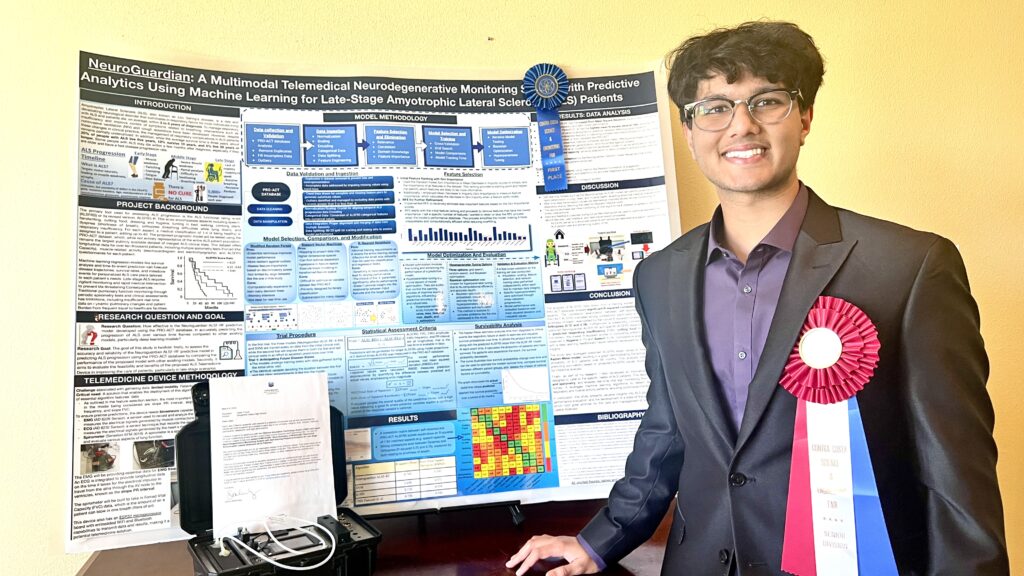
Dougherty Valley High School student Gatik Trivedi won first place at the state Science & Engineering Fair for his entry entitled NeuroGuardian. Photo: SRVUSD
Four Dougherty Valley High students win amidst 900 entries at state competition.
By Ilana Israel Samuels, Director of Communications, Family and Community Engagement, San Ramon Valley Unified School District
Danville, CA (May 9, 2024) – More than 65 high school students and 40 middle school students recently placed or received special awards at the 2024 Contra Costa County Science & Engineering Fair, including students from Diablo Vista, Gale Ranch, Iron Horse, Los Cerros and Windemere Ranch Middle Schools; and from California, Dougherty Valley and Monte Vista High Schools. Students submitted projects in the categories of Behavioral Sciences, Biological Sciences, Engineering Sciences, Environmental, Math and Computer Science, or Physical Sciences.
The students prepared for the science fairs in part by meeting with coaches to work on their research experiments and craft presentations. The students were excited to participate and represent their schools at this annual fair.
Each year, 18 successful projects are selected by the judges to represent the Contra Costa County Science & Engineering fair at the state-level competition – the California Science and Engineering Fair. This year, 11 of the 18 projects moved forward for this special honor were submitted by SRVUSD students, who competed against 900 other entries during the event on Tuesday, April 16, 2024.
Four San Ramon Valley Unified School District students from Dougherty Valley High School won big at the California Science & Engineering Fair this year. They each placed 1st or 2nd in their respective categories:
Gatik Trivedi, 1st place, NeuroGuardian: A Multimodal Telemedical Neurodegenerative Monitoring System with Self-learning Predictive Analytics for Late-Stage Amyotrophic Lateral Sclerosis (ALS) Patients, Computational Systems Medical
Yizhou (Michael) Wang and Yifan (Frank) Shi, 1st place, Development of a Biodegradable Hybrid Inspired Paper Battery Powered by Carbon-Black with Origami Designs Applicable for Biomedical Smart Systems, Chemistry
Vaishnavi Kolluru, 2nd place, Breastmilk: Nature’s Vaccine Against COVID-19, Mammalian Biology
“I am pleased to recognize our students for their outstanding accomplishments at the California Science and Engineering Fair,” said Dr. John Malloy, Superintendent, San Ramon Valley Unified School District. “Their dedication, creativity, and passion for their research projects showcase the depth of talent and potential we have within our educational community. I look forward to their future contributions to science and research. I also thank all of the educators who supported our students through these achievements.”
The California Science & Engineering Fair is the final science fair of the academic year for students throughout the State of California in grades 6-12, serving California’s future scientists and engineers since 1952. The fair is hosted by the California Science and Engineering Foundation.
SRVUSD partners with Bay Area LEEDS to ensure students have access to the tremendous resources the organization provides for the region’s youth to prepare them for a future in STEM careers. In an email, Bay Area LEEDS Executive Administrator, Janice Fujii, and CEO April Treece, noted that this was an outstanding achievement and that our students “worked very hard to excel in their field of study.”
San Ramon Valley Unified School District congratulates all of its participating students for their remarkable science fair achievements and excellence in research.
About Bay Area LEEDS: Bay Area LEEDS helps prepare the region’s youth for tomorrow’s STEM careers with relevant industry tools and skill sets, strengthening the workforce pipeline. We collaborate with business and educators to excite students about pursuing purposeful post-secondary pathways aligned with high-wage, high-skill, high-demand jobs in the global economy. The organization improves STEM education in regional communities by providing STEM teachers professional development, and providing students with meaningful and engaging STEM learning opportunities, while involving current STEM professionals in educating the next generation of STEM leaders and creators. Linking Education & Economic Development Strategies Bay Area LEEDS is one of the few business/education intermediaries in the Bay Area that brings long-term talent development solutions to workforce shortages by engaging STEM career pathway educators (K-16) and employers who have high-demand, difficult-to-fill STEM jobs. Through innovative programming, we develop, plan and execute industry- supported approaches that build a more diverse, inclusive and equitable talent base, assuring economic vitality in our local communities.
About San Ramon Valley Unified School District: Located in the San Francisco Bay Area, San Ramon Valley Unified School District (SRVUSD) is one of the highest-achieving school districts in California. With approximately 29,000 students, the district encompasses the communities of Alamo, Danville, San Ramon, and a small portion of Walnut Creek and Pleasanton.
SRVUSD has been recognized at state and national levels with many awards and achievements. The district is designated by AASA, The School Superintendents Association, as a Learning 2025 Lighthouse District because it serves as a model of positive change in public education and is committed to the whole child. Based on a foundation of academic excellence, SRVUSD’s work is guided by the district’s Strategic Directions, and broadening the definition of success so all students can thrive. The district maintains graduation rates above 96%. The Learner Profile outlines the competencies the district aspires for students to possess upon graduation, preparing students to be Critical Thinkers, Creative Contributors, Intentional Collaborators, Adaptable Learners, and Effective Communicators.
Read More
Images are from two robberies that occurred in Hayward, along with two handguns that were recovered during search warrants related to this collaborative investigation. Source: Hayward PD
Multi-agency effort
By Hayward Police Department
Three arrests have been made related to a string of 11 robberies that took place in the Eastern San Francisco Bay Area over a span of seven months from August 2023 through February 2024.
The 11 robberies occurred in multiple cities in the East Bay including seven in Hayward, one in Livermore, one in Fremont, one in San Leandro and one in Castro Valley.
With assistance from the U.S. Marshals Service, the following individuals have been taken into custody for various charges including robbery, assault with a deadly weapon, aggravated kidnapping, and various weapons violations:
- 42-year-old Oakland resident Jaray A. Washington was taken into custody on Feb. 13, 2024. Washington is believed to be responsible for all 11 robberies.
- 24-year-old Oakland resident Cameron Jamary Watkins was taken into custody on Mar. 11, 2024. Watkins is believed to be responsible for two robberies in concert with Washington.
- 26-year-old Concord resident Deante Hunt was taken into custody on Apr. 4, 2024. Hunt is believed to be responsible for two robberies in concert with Washington.
During each robbery, at least one subject brandished a firearm. In some cases, the subjects moved employees and/or customers to other parts of the businesses and forced employees to hand over cash from registers and/or safes while being held at gunpoint. The subjects also forced employees and customers to hand over their personal property while at gunpoint before the subjects fled the scene.
The coordinated effort amongst multiple agencies, including the support and resources provided by the Federal Bureau of Investigation (FBI) and the United States (US) Marshals Service, was instrumental in the identification and apprehension of those believed to be responsible for these crimes. We extend our gratitude to the FBI and U.S. Marshals Service for their invaluable assistance.
Hayward Police Chief Bryan Matthews commented on the arrests, stating, “I am so proud of the hard work throughout this investigation. The coordinated effort between our law enforcement partners shows the steadfast commitment to ensure the safety and well-being, not just in our respective communities, but for the entire Bay Area.
I personally want to commend the hard work and dedication of our Hayward detectives and detectives from the Alameda County Sheriff’s Office, San Leandro Police Department, Fremont Police Department, and Livermore Police Department. Your tireless efforts, thorough investigative steps, and unwavering commitment were instrumental in bringing these cases to successful resolution.
Together with our law enforcement partners, we will continue to work diligently so communities feel safe where they work and live. I commend everyone’s hard work to bring those believed to be responsible for these crimes to justice.”
“I want to thank the detectives for their hard work and coordination with our allied agencies,” said Livermore Police Chief Jeramy Young. “Jaray Washington is a violent repeat offender who has been previously convicted for armed robberies in the South Bay Area. We will be tracking this case as it moves through the criminal justice system.”
According to localcrimenews.com, the five-foot, 10-inch tall, 195-pound Washington is Black and has a history of arrests dating to 2019 for various crimes including residential robbery and inflicting corporal injury on a spouse or cohabitant, Watkins is five-foot, 10-inches tall, 152 pounds and is Black; and the six-foot, two-inch tall, 160-pound Hunt is Black and was also arrested in 2018 by Emeryville PD for a warrants or holds only.
Allen D. Payton contributed to this report.
Read More
Glydways and BEEP automated vehicles were on display at the summit. Photo (left) and video screenshot by CCTA.
Transportation leaders convened in San Ramon to share strategies to build public trust, redefine mobility & develop the future workforce of transit
On Tuesday, May 7, 2024, the Contra Costa Transportation Authority (CCTA), GoMentum Station and Bay Area LEEDS joined forces to host the ninth annual Redefining Mobility Summit. Transportation officials from regional, state and federal agencies gathered with private industry innovators, local youth and workforce development experts in San Ramon’s Bishop Ranch business park to share vital information aimed to advance mobility. Autonomous vehicles took center stage as Glydways, BEEP and May Mobility unveiled transit options of the future in the Demonstration Exhibit Zone.
“This year’s panel topics: fostering public trust for new innovations like autonomous vehicles, connecting communities through technology, building the workforce of the future, and solving the challenges of our transportation systems are the very touchstones CCTA embraces every day to improve the quality of lives for those who live and work in Contra Costa County,” said CCTA Vice Chair and Antioch Mayor Lamar Hernandez-Thorpe.
The summit included a youth showcase where high school aged students shared their STEM projects and the midday Demonstration Exhibit Zone, which was powered by smart, clean generators supplied by Richmond-based Moxion. All the day’s activities connected the dots between innovation and future benefits not just for transportation but for the region.
“Innovation in transportation leads to improved productivity, enhanced trade, infrastructure development, increased regional commerce and job creation—all of which contribute to economic growth,” Contra Costa Supervisor Candace Andersen said.
Read MoreInformation on 2.7 million public employees from 2,518 agencies and 54 pension plans
Shows 15 police officers in Contra Costa were paid more than $500,000 in 2022, including the highest to El Cerrito Police Chief at over $850,000 plus, 10 others from his dep’t
Highest paid in the state was Vallejo Police Chief at $953,396.61
Transparent California, the state’s largest database of public pay and pension data, has completed data collection efforts for records detailing 2022 employee compensation and pension payments made by almost all public agencies in our state!
In the last year we’ve added data on 2.7 million public employees obtained from 2,518 agencies, and 1.4 million pension records from 54 pension plans to our database. Added to our existing data from the last decade results in a total of 42 million records available on the site. All obtained from the agency’s own pay data using requests made under the California Public Records Act, all are available online for free to anyone with an interest at http://transparentcalifornia.com.
Pay and benefit costs are the single largest expense in our government. Transparent California’s site provides members of the public with unprecedented visibility into that spending. Knowing how government employees are personally benefiting from state and local spending is critical to ensuring true accountability in our government.
In 2022 over a million public employees, and over 125,000 pension recipients, enjoyed compensation packages totaling over $100,000 per year. Using the data available we can see the City Manager in Norco was provided total compensation of $539,705, the school superintendent in Ontario-Montclair was paid $643,796, and a police lieutenant in Vallejo made $839,798.
(Editor’s Note: According to an April 2021 ABC7 News report, Vallejo Police Lieutenant Herman Robinson, a 47-year employee with the department was fired. According to an April 2022 Vallejo Sun report, an arbitrator ordered Robinson be reinstated with back pay and be paid 10% interest on his back pay. He “was one of the most highly paid city of Vallejo employees and received $179,590 in base pay and $196,941 in overtime pay for calendar year 2020, according to Transparent California, a website that tracks California government worker salaries. With benefits included, Robinson earned $547,403.68.”
Thus, the $839,798 for 2022 included two years of compensation including the 10% interest on the back pay.)
UPDATE: That information was shared with Transparent California’s Director of Research, Todd Maddison. In response he wrote, “Thanks, appreciate the background. We are rarely if ever given the ‘story’ behind any particular pay data, and with over 4 million records a year to collect we usually don’t investigate unless someone feels the number is erroneous. We do offer agencies the ability to make a note if they want so site users don’t think an outlier is ‘normal pay’, but we’re rarely taken up on that.
Meanwhile, in 2022 there were 67 police employees who made total pay only (excluding benefits) of over $400,000. I’ve attached a spreadsheet of police employees in case you’re interested.”
TC 2022SafetyEmployeesPolicePay 20240418
That spreadsheet shows the highest paid police officer in Contra Costa County in 2022 was Richmond Police Sergeant Florencio Rivera, whose total compensation was $512,432. A total of 15 officers in the county were paid more than $500,000 each, with 11 of them from the El Cerrito PD.
The Transparent California website gives ordinary taxpayers access to such data, illuminating the spending that drive state and local government deficits, including the $73 billion in red ink being projected by the state.
Data collection for 2023 compensation is now starting. Those who want to monitor specific agencies can subscribe (free) or support the effort by sponsoring data collection from that agency.
Maddison noted, “2022 data collection was a great achievement. We’re particularly proud our small donor funded team lapped the State Controller’s Office’s government-funded effort in K-12 education, collecting data from 1055 districts to their 424. We’re focused on giving the people of California the data they deserve to see how their tax dollars are being spent.”
For more information go to http://transparentcalifornia.com.
Allen D. Payton contributed to this report.
Read More
Oakland-based Ghost Town gang co-conspirators stole bags of jewelry valued at $300,000 to $500,000
Face 10 to 20 years in prison; three have histories of arrests
 By U.S. Attorney Northern District of California
By U.S. Attorney Northern District of California
OAKLAND – A federal grand jury has handed down a superseding indictment alleging Jakari Jenkins, Demarco Barnett, Garland Devonte Rabon, and Keanna Alloise Smith-Stewart conspired with each other, and other members of an Oakland-based street gang, to rob several San Francisco Bay Area businesses, announced United States Attorney Ismail J. Ramsey and Federal Bureau of Investigation (“FBI”) Special Agent in Charge Robert K Tripp. The superseding indictment, filed April 18, 2024, was unsealed last Friday at an initial appearance by defendant Rabon before U.S. Magistrate Judge Kandis A. Westmore. The final defendant to appear in court, Ms. Smith-Stewart, made her initial appearance before Magistrate Judge Westmore on April 30.
The superseding indictment alleges that by March of 2022, the four defendants were all members of, or had association with, an Oakland-based street gang called the Ghost Town gang. The indictment describes a series of armed robberies and burglaries that were committed by groups of co-conspirators.
The first robbery described in the superseding indictment involved Barnett and Jenkins, who along with other members of the gang carried out the armed robbery of a coin and stamp store located on the 10th floor of a building in the South of Market neighborhood of San Francisco. As part of the plan, members of the conspiracy allegedly rented a car to be used as a getaway car. In addition, members of the conspiracy stole a license plate to be used on the getaway car and met additional members of the conspiracy at the Oakland residence of another gang member. On March 18, 2022, the day of the robbery, Barnett, Jenkins, and at least two additional unnamed co-conspirators entered the store, brandished firearms, and demanded money from the business and the two individuals who happened to be present at the time— the owner and his son. The robbers struck the head and zip-tied the hands of the owner’s son, and absconded with cash, jewelry, and coins having an aggregate value of more than $300,000.
The second armed robbery described in the superseding indictment occurred approximately eight months later. As a prelude to the second robbery, members of the conspiracy pretended to be customers of a jewelry store in San Pablo. The pretend customers left jewelry with the operators of the store. According to the indictment, Jenkins, Barnett, and Rabon arrived at the jewelry store on November 12, 2022, with at least four other co-conspirators and robbed the store of jewelry, including the jewelry that members of the gang previously had left with the store. The robbers arrived in two getaway cars—both Dodge Chargers bearing stolen license plates. Five co-conspirators, at least three of whom were brandishing firearms, entered the store while two of the co-conspirators waited outside in the getaway cars. The co-conspirators stole bags of jewelry valued at approximately $300,000 to $500,000. The indictment describes how all four defendants in the superseding indictment later wore the stolen jewelry, shared the stolen jewelry with other members of Ghost Town gang members, or otherwise made use of the stolen jewelry for their personal purposes.
The superseding indictment also describes the November 24, 2022, burglary of an Audi dealership in Oakland. Specifically, the indictment describes how days before the robbery, Smith-Stewart allegedly purchased a black Audi S5 from the dealership using a fake driver’s license and another person’s social security number. After providing a down payment of approximately $9,500 toward the purchase of the car, Jenkins, Barnett, and another unindicted co-conspirator burglarized the dealership and stole the safe containing the down payment that Smith-Stewart previously had submitted.
Finally, the superseding indictment describes the Christmas Eve, 2022, armed robbery of a marijuana business in Oakland and one of its employees. The superseding indictment describes how the worker was leaving the business when Jenkins, Barnett, Rabon, and Smith-Stewart, along with at least four other co-conspirators, arrived at the marijuana business in two getaway cars. The robbers brandished weapons, directed the worker back into the building, and demanded “budded weed” and “money.” One of the robbers struck the worker in the head with a firearm. The robbers searched through the worker’s pockets and stole his bank debit card. The robbers absconded with the victim’s debit card and a bag of marijuana plant trimmings. The superseding indictment describes how on December 26, 2022, Smith-Stewart allegedly used the victim’s debit card at Westfield Mall in San Francisco to purchase more than $1,000 worth of items at Bloomingdale’s and Nordstrom.
In sum, the defendants are charged with the following crimes:
|
Defendant |
Charge |
Maximum Statutory Sentence, If Convicted |
|
ALL DEFENDANTS (one count each) |
18 U.S.C. § 1951(a) (Hobbs Act Robbery) |
– Imprisonment: 20 years
– Fine: $250,000 – Supervised Release: 3 years – Special Assessment: $100 per count – Forfeiture – Restitution |
|
JAKARI JENKINS (three counts) DEMARCO BARNETT (three counts) GARLAND RABON (two counts) KEANNA SMITH-STEWART (one count) |
18 U.S.C. § 1951 Robbery and Aiding and Abetting Robbery Affecting Interstate Commerce |
– Imprisonment: 20 years
– Fine: $250,000 – Supervised Release: 3 years – Special Assessment: $100 per count – Forfeiture – Restitution |
|
KEANNA SMITH-STEWART (one count) |
18 U.S.C. §§ 1029(a) and 2 Counterfeit Access Device Fraud |
-Imprisonment: 10 years
– Fine: $250,000 – Supervised Release: 3 years – Special Assessment: $100 – Forfeiture – Restitution |
|
KEANNA SMITH-STEWART (one count) |
18 U.S.C. § 1029(a)(5) Access Device Fraud |
Imprisonment: 15 years
– Fine: $250,000 – Supervised Release: 3 years – Special Assessment: $100 – Forfeiture – Restitution |
In addition, as part of any sentence, the court may order additional fines; restitution, if appropriate; and an additional term of supervised release to begin after any prison. Nevertheless, any sentence following conviction would be imposed by the court after consideration of the U.S. Sentencing Guidelines and the federal statute governing the imposition of a sentence, 18 U.S.C. § 3553.
An indictment merely alleges that crimes have been committed, and all defendants are presumed innocent until proven guilty beyond a reasonable doubt.
Defendants Jenkins and Barnett are in custody and are scheduled to make the next appearance before the Honorable U.S. District Judge Araceli Martinez-Olguin on July 15, 2024, in Oakland. Defendants Rabon and Smith-Stewart were in custody and scheduled to appear before Chief Magistrate Judge Ryu on May 1, 2024.
This case is being prosecuted by Assistant U.S. Attorneys Lauren Harding and Jonathan Lee, with the assistance of Yenni Weinberg and Erick Machado. The prosecution is the result of an investigation by the FBI, with assistance from the police departments of Oakland, San Francisco, and San Pablo.
According to localcrimenews.com, the five-foot, five-inch tall, 220-pound, 32-year-old Jenkins of Oakland has a history of arrests dating back to 2013 for multiple weapons, drug and burglary charges, and a hit-and-run; the five-foot, 11-inch tall, 215-pound, 34-year-old Barnett of Oakland, has a history of arrests dating to 2014 for multiple burglaries and a hit-and-run; the six-foot tall, 190-pound, 28-year-old Rabon of Mountain House, has a history of arrests dating to 2015 for multiple burglary and weapons charges; and the five-foot, five-inch, 135-pound, 31-year-old Smith-Stewart of West Sacramento was also arrested on April 29, 2024 by the Alameda County Sheriff’s Department. No details of the arrest were available.
Allen D. Payton contributed to this report.
Read More“We’re taxed too much, already” – Thom Bogue, running to represent District 3 which includes Brentwood, Oakley, Discovery Bay
Solano County, CA – Dixon Councilman Thom Bogue, candidate for State Senate in District 3, announced his opposition to AB 3259 by Assemblywoman Lori Wilson (D-Suisun City) making it easier to raise taxes only in Solano County. According to the press release about the bill from her office, it “authorizes an increase in the sales tax limit, providing an avenue for residents to decide on potential funding for crucial infrastructure and public services.”
“I have informed Ms. Wilson that I will not support her bill and that it’s unnecessary for Solano County residents, as we’re taxed too much, already,” Bogue stated. “We don’t have a revenue problem in Solano County or Sacramento, we have a spending problem.”
In his message to the assemblywoman, the candidate wrote, “I strongly oppose AB3259 in removing limitations to sales tax increases. The potential impacts to the everyday citizen and to our economy in pushing prices further up is not what we need. This is not a government revenue issue, it is a spending issue, and our State needs to quit impoverishing people further. The only question I and many others have, is are our legislators purposely trying to destroy our State? Certainly looks like it.”
The sales tax rate in Solano County is 6.25% (including the state and county taxes). The total local sales tax rate in Solano County is 7.375%. The average cumulative sales tax rate in the county is 8.34%. That includes state, county, city, and special district taxes.
“With the economy hurting and inflation continuing to increase the cost of living, we can’t ask our residents and businesses to pay more to the government,” Bogue added.
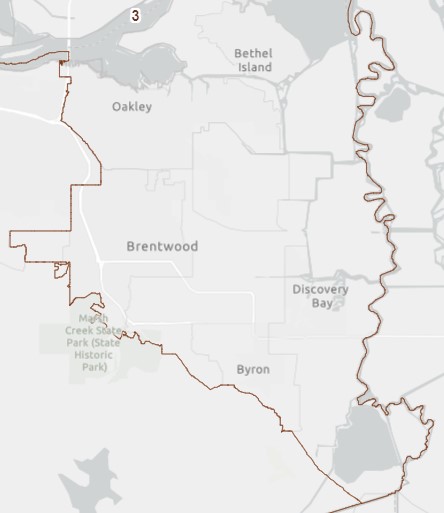
May of Eastern Contra Costa County portion of State. Source: wedrawthelines.ca.gov
Placing first in the primary election in March, Bogue is running for the open State Senate seat in District 3 which includes the Eastern Contra Costa County cities of Brentwood and Oakley, and communities of Discovery Bay, Bethel Island, Byron and Knightsen. The election is Nov. 5. For more information about his campaign visit www.thombogue4statesenate.com.
Read More

Students between classes at California Polytechnic State University, San Luis Obispo. Credit: Ashley Bolter / EdSource
Some have been exempt from paying out-of-state tuition since 2001
By Zaidee Stavely, EdSource – Republished with permission
More than 20 years ago, California passed a law allowing some undocumented immigrant students to attend college with in-state tuition, if they meet certain requirements.
But immigrant rights advocates say many students who should have been eligible have been wrongfully denied in-state tuition because of confusion over requirements, misinformation and different interpretations of the law at different college campuses.
“We lose that incredible brain power and colleges are losing enrollment,” said Nancy Jodaitis, director of higher education for Immigrants Rising, a nonprofit organization that advocates for undocumented people to achieve educational and career goals.
Immigrants Rising brought together officials from all three public college systems — California Community Colleges, California State University and University of California — to discuss and agree on answers to frequently-asked questions about the law.
The result is a document called the Systemwide AB 540 FAQ, which all three systems have now signed. The document includes answers to 59 questions, such as:
- What if a student graduated from a California high school (completing three years’ worth of high school credits), but did not attend three years at a California high school?
- Does a student have to take classes full time for their attendance to count?
- Does all their coursework have to be taken at the same school?
Spokespeople from UC, CSU and California Community Colleges all celebrated the document.
Paul Feist, vice chancellor of communications and marketing for the California Community Colleges Chancellor’s Office, said the document is particularly important because there are several different laws regarding the nonresident tuition exemption.
The first bill exempting some undocumented immigrants from out-of-state tuition, Assembly Bill 540, was signed into law in 2001. Since then, three other bills have been passed to expand the law, in 2014, 2017 and 2022.
“While the intent was to expand access to AB 540 financial assistance, they had the unintended effect of making it more difficult to navigate,” Feist said. “This FAQ is designed to provide clearer explanations and provide additional resources in advising students.”
Under current California law, students who are undocumented or have temporary protection from deportation such as Deferred Action for Childhood Arrivals (DACA), or who are U.S. citizens or permanent residents, are eligible for in-state tuition and state financial aid, if they attended at least three years of high school, adult school or community college in California and obtained a high school diploma or equivalent, an associate degree or fulfilled the minimum requirements to transfer to a UC or CSU.
Access to state financial aid and in-state tuition can be a critical factor for undocumented students, who are barred from receiving federal financial aid. Without the law in place, some of them would be charged tuition rates for international students, often much higher than in-state tuition.
“This is huge,” said Maria Gutierrez, a college counselor at Chabot College in Hayward and a doctoral student at San Francisco State University. “It helps us be aligned and have something in writing.” Before the FAQ document, Gutierrez says college staff in charge of approving exemptions from out-of-state tuition were sometimes afraid to make decisions without written proof of how to interpret the law.
Gutierrez herself has benefited from AB 540. She came to the U.S. when she was 5 years old on a visa, which later expired. She attended elementary, middle and most of high school in California. She also graduated from high school in California. But when she applied to attend community college in California, different campuses disagreed on whether she was eligible for in-state tuition because she had spent two years of high school in Utah. At the time, a second law had recently been passed to allow colleges to consider years of attendance in elementary and middle school for AB 540 eligibility.
“One college that I went to in So Cal, I was approved for AB 540. When I had to go back to the Bay Area, I was not approved for AB 540. So then I was confused that there was this inconsistency,” Gutierrez said.
A few years later, when she applied to transfer to a four-year college, both UC and CSU campuses told her she was not eligible for in-state tuition, even though by then, a law had passed that clarified that attendance at community college could be counted toward the requirements. She spent a semester paying out-of-state tuition at San Jose State University, before the university finally acknowledged she was legally eligible for in-state tuition.
As a college counselor, Gutierrez continues to meet students who have been incorrectly told they are not eligible for in-state tuition.
“It’s crazy because in reality it hasn’t changed much,” she said. However, she said, the financial burden is harder now, because most students graduating from high school cannot apply for work permits under DACA, because the government has not accepted new applications since 2017.
“I see my students now and I see the struggles they’re going through. If I didn’t have DACA, I honestly don’t think I would be where I am now,” Gutierrez said. “There’s no way that I would’ve been able to pay nonresident fees or wait for whoever it is that is determining that to learn what they need to do for me to be able to go to college.”
Advocates say they hope the document will help colleges give correct information and avoid students having to research on their own for information.
California also recently streamlined the process for undocumented students to apply for financial aid and exemption from in-state tuition on the same application when they fill out the California Dream Act application. In the past, students had to both fill out a California Dream Act application and an AB 540 affidavit form for each college. Now, the AB 540 form will be part of the same application.
Diana Aguilar-Cruz said that change is significant. Aguilar-Cruz is currently pursuing a master’s degree in public health at Cal State Fullerton. When she first began her undergraduate education at Cal Poly Pomona, she was charged nonresident tuition, which was almost double the in-state tuition. She had immigrated to the U.S. from Mexico City in 2015, when she was 14 years old, and lived with her grandmother in Baldwin Park while attending high school.
She had completed a California Dream Act application, but no one told her she also had to complete a separate form. After researching it herself online, she found the form and completed it, at which point the university finally changed her tuition to in-state.
“If I didn’t find it in my Google search, would I be paying in-state tuition for my four years of college?” Aguilar-Cruz said. “I always think to myself, what would have happened if I was a more fearful student or a student who did not have a strong support system at home?”
According to the Renewing the Dream page on the California Student Aid Commission’s website, “In 2021-22, only 29% to 30% of undocumented college students who applied for financial aid through the California Dream Act Application (CADAA) ultimately enrolled in school. Moreover, only 14% of California’s estimated undocumented student population in postsecondary education ultimately received state financial aid.”
Allen D Payton contributed to this report.
Read More

Antioch Councilman Mike Barbanica (Source: Barbanica for Supervisor campaign) and State Senator Steve Glazer. (official photo)
“Mike Barbanica is a no-nonsense leader…” – Steve Glazer
ANTIOCH, CA—Local small businessman, housing expert and Antioch Councilman Mike Barbanica announced receiving the endorsement of California State Senator Steve Glazer (D-Orinda) in his race for Contra Costa County Board of Supervisors in District 5. Senator Glazer, who represents Contra Costa and Alameda Counties, is recognized for his independence and problem-solving abilities.
“Mike Barbanica is a no-nonsense leader with the skills and expertise to effectively impact the issues facing us in Contra Costa County,” said Senator Glazer. “Mike shares my belief that politics is about service and progress, and I’m confident he’ll bring a sense of civility and respect for diverging opinions that we need more of in elected office.”
“Senator Glazer is an icon of principled leadership, someone who believes in prioritizing results over rhetoric and people over politics,” said Barbanica. “That approach can help us improve our homeless, housing, and crime issues, and that will be my approach on the Contra Costa Board of Supervisors.”
Barbanica and his wife, Kristine, operate a small business, Blue Line Property Group, helping families access housing. Mike is a retired Police Lieutenant and decorated officer who served for over 20 years.
Barbanica is running for the open seat in Contra Costa’s District 5, which cover the northern portions of Contra Costa, running from Hercules to Antioch, and includes Martinez and Pittsburg.
For more information visit www.mikebarbanica.com.
Read More






